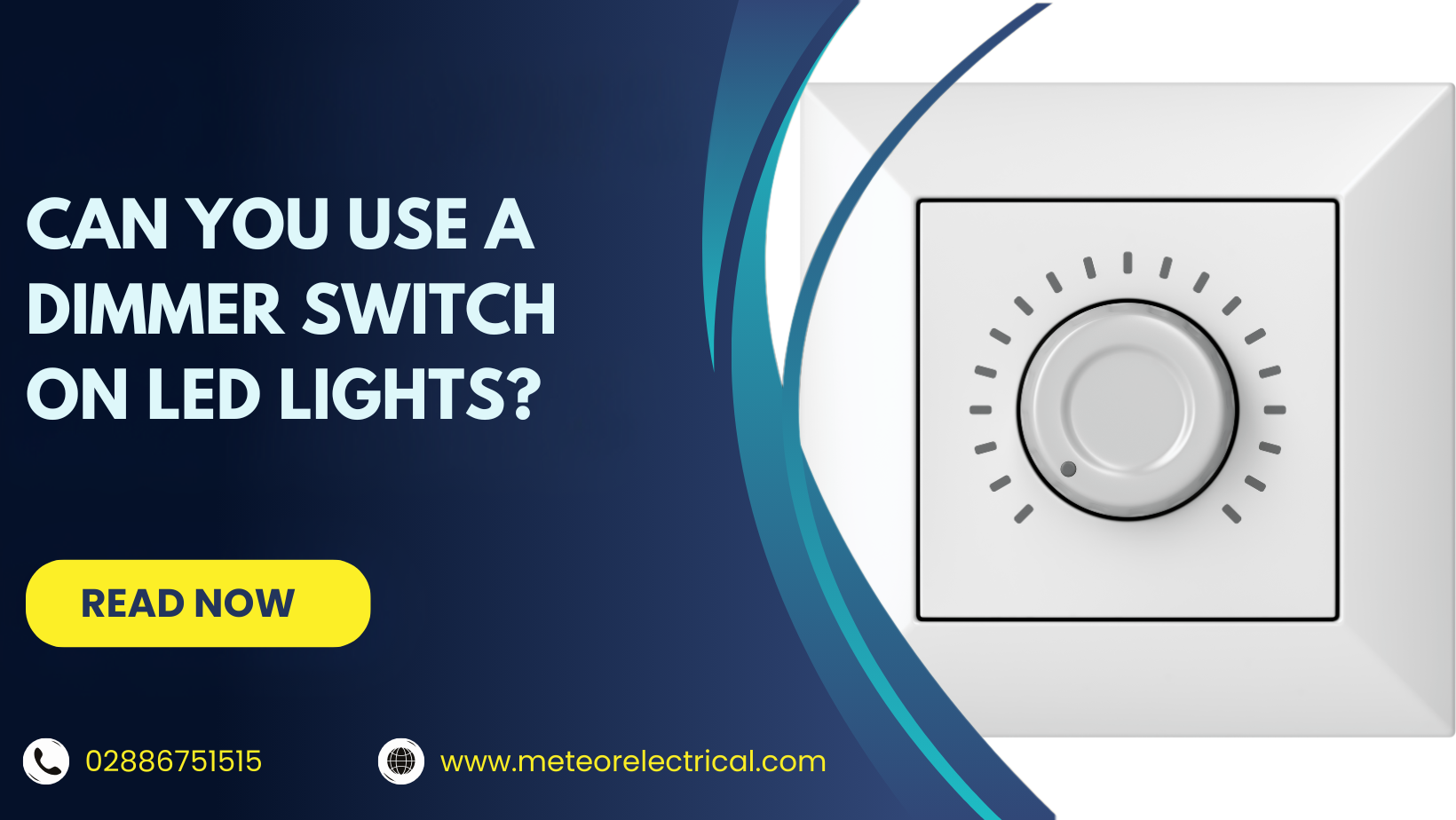Transform Your Lighting Experience: LED Dimmer Switches Explained
Transform Your Lighting Experience: LED Dimmer Switches Explained
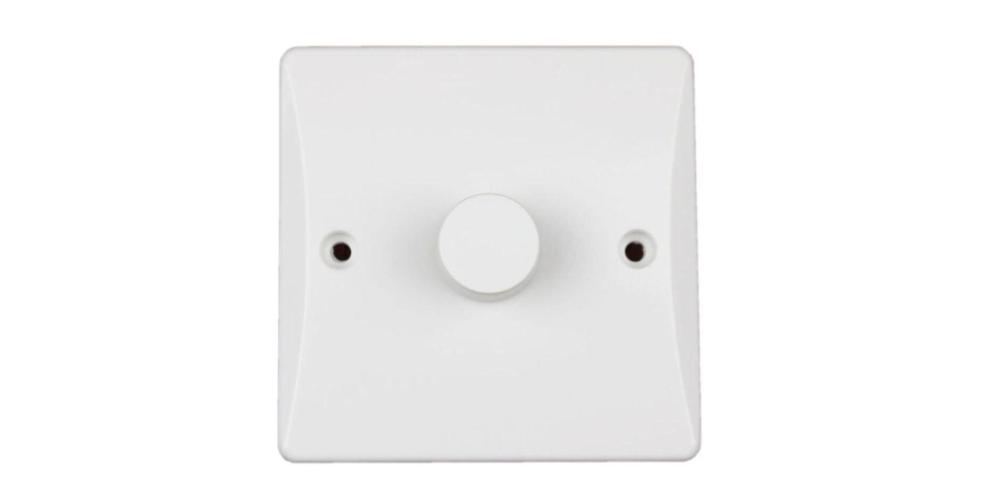
Lighting is more than just a practical necessity; it has the power to transform your space. At Meteor Electrical, we understand how important it is to create the right atmosphere—whether you're looking to energise a room or make it feel more relaxing. That's where LED dimmer switches come into play.
These smart lighting solutions give you control over your LED lights, allowing you to adjust brightness levels for any setting. Whether you're hosting a party, enjoying a quiet evening, or working from home, LED dimmers help you fine-tune your environment with ease.
But there’s more to dimmer switches than just convenience. They’re energy-efficient, eco-friendly, and long-lasting. Let’s explore how LED dimmer switches can enhance residential and commercial spaces alike.
From Cosy to Bright: Perfect Ambience at Your Fingertips
Creating the right mood is key to any setting. With an LED dimmer switch, you can seamlessly transition from a bright, energising environment to a soft, cosy glow.
Example scenarios:
- Hosting a dinner party and need ambient lighting
- Settling in with a book and need focused brightness
With a simple adjustment, LED dimmers offer the flexibility to tailor lighting to your exact needs.
Boost Energy Efficiency and Comfort with LED Dimmers
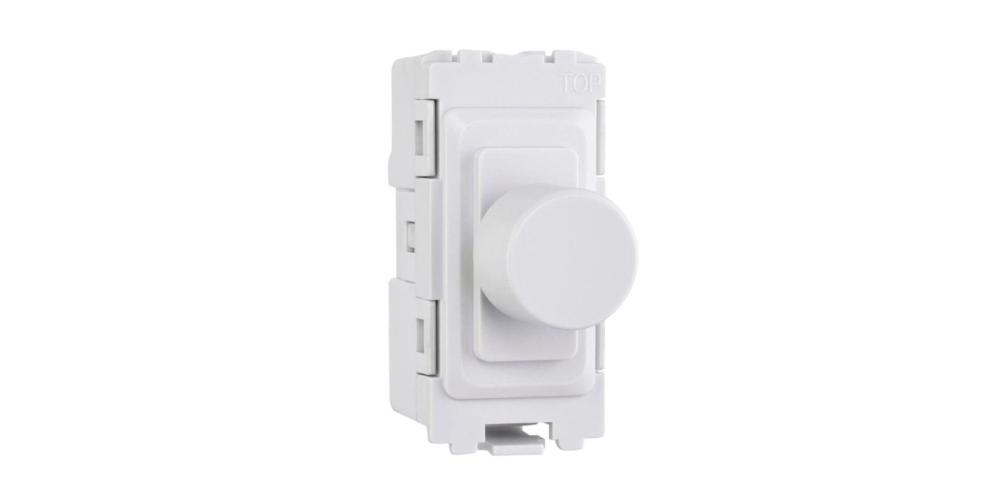
LED lights are already known for being highly energy-efficient, but when paired with dimmer switches, the benefits are amplified.
Benefits include:
- Lower energy usage: Dimming your lights reduces the power drawn from your mains, directly cutting down electricity bills.
- Longer lifespan: Reduced brightness means less heat and strain on components, helping LED bulbs last longer.
- Eco-friendliness: Conserving electricity lowers your carbon footprint—great for both your wallet and the environment.
According to Energy.gov, dimming LED lighting can significantly enhance overall energy savings while also improving performance.
Credit: eFIXX
Maximising Control with LED-Compatible Dimmers
Modern LED-compatible dimmer switches offer precise control over brightness levels, allowing you to customise your lighting for every task and time of day.
- Multifunctional spaces: One room can serve as a workspace, lounge, or dining area—all with the right lighting level.
- Smooth adjustment: Easily shift from a productive environment to a calming one at the turn of a knob or tap of a smart control.
This flexibility improves comfort, productivity, and mood—especially when used in shared or multi-use rooms.
What You Need to Know About LED Dimmer Compatibility?
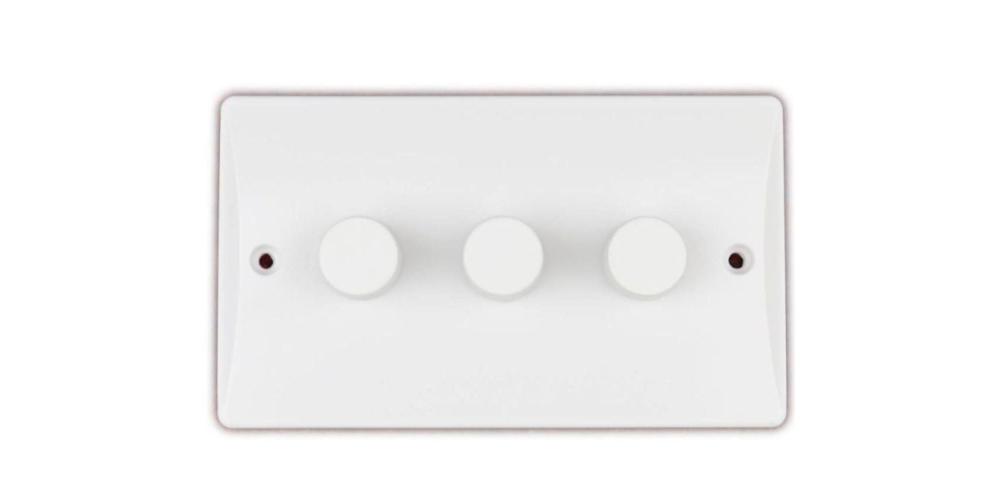
While LED dimmers are excellent tools, they must be correctly paired with compatible bulbs and hardware.
Key compatibility checks:
- Dimmable LED bulbs: Ensure your LED bulb is labelled as dimmable. Many standard bulbs aren’t.
- Correct dimmer switch type: Use dimmers designed specifically for LEDs—traditional ones for incandescent bulbs can cause issues.
- Power range match: LEDs use very little power. The dimmer must support low-wattage operation to avoid buzzing or flickering.
Tip: Check the product specifications or consult a professional if unsure.
Do You Need a Special Dimmer Switch for LED Lights?
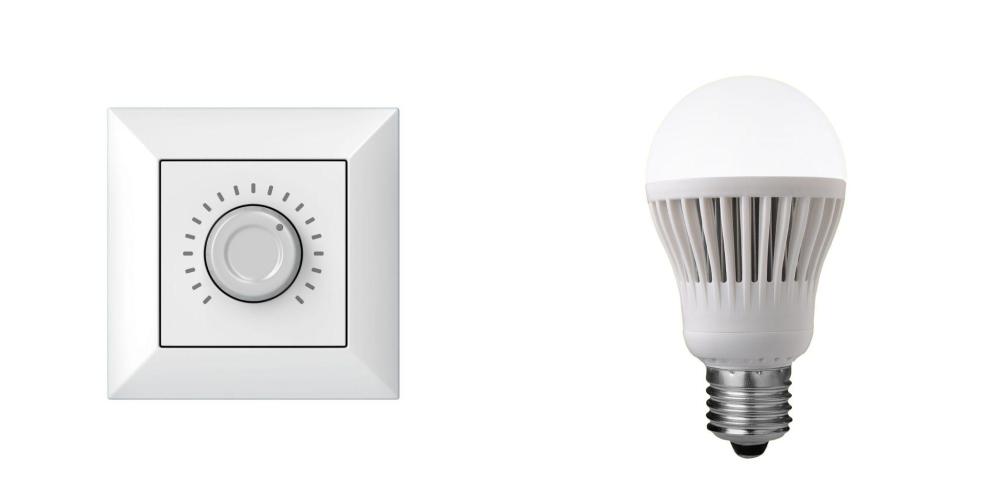
Yes. Traditional dimmer switches reduce voltage, which works for incandescent bulbs but not for modern LEDs. LED lights require precise current modulation—something older dimmers can’t provide.
Using the wrong dimmer can cause:
- Buzzing sounds
- Flickering lights
- Reduced bulb lifespan
The solution: always use a dimmer switch made for LED technology.
LED Dimmer vs. Standard Dimmer: What’s the Difference?
|
Feature |
Standard Dimmer |
LED Dimmer |
|
Designed for |
Incandescent bulbs |
LED bulbs |
|
Method |
Reduces voltage |
Controls electrical current precisely |
|
LED compatibility |
Poor |
Excellent |
|
Common issues |
Flickering, buzzing |
Smooth dimming experience |
Conclusion: If you’re using LED lights, choose a modern LED-compatible dimmer to ensure proper function.
Can You Put a Dimmer Switch on LED Lights?
Yes—as long as you're using:
- Dimmable LED bulbs, and
- A compatible LED dimmer switch
This combination ensures:
- Smooth dimming range
- Quiet operation
- Extended LED and dimmer lifespan
Just ensure both components are compatible before installation to avoid issues like flickering or buzzing.
Can LED Lights Be Used with a Dimmer Switch?
Absolutely! But the keyword is compatibility.
To avoid poor performance:
- Choose LED bulbs labelled as dimmable
- Use trailing edge dimmers for best results
Dimmable vs. Non-Dimmable LEDs
Dimmable LED Bulbs:
- Include special drivers that regulate brightness smoothly
- Offer flexible lighting control for any room
- Use less energy at lower brightness levels
- Last longer due to reduced thermal stress
Non-Dimmable LED Bulbs:
- Provide fixed brightness
- Cannot be used with dimmer switches
- Risk flickering or failure if installed with dimmers
- Ideal for utility areas like garages or bathrooms
Credit: AintBigAintClever
How Dimmer Switches Work
Power Adjustment
Dimmer switches alter the amount of electrical energy sent to the bulb. Less energy = lower brightness.
Waveform Modification
Two types of dimmer technology:
- Leading Edge Dimmers: Older, less LED-friendly. Can cause flickering or buzzing.
- Trailing Edge Dimmers: Designed for LEDs. Provide smoother dimming, quieter performance, and reduced electrical noise.
Trailing edge dimmers are the best choice for modern LED lighting systems.
Additional Benefits of Dimmer Switches
Energy Efficiency
Dimmed lights draw less electricity—great for reducing utility costs.
Extended Bulb Lifespan
Reduced output = lower heat and stress, leading to longer bulb life.
Enhanced Ambience
Control the mood in every room—bright for tasks, soft for relaxing.
Quiet Operation
No buzzing or humming when using the right LED-compatible dimmer.
How to Choose the Best Dimmer for Your LED Bulbs
When shopping for a dimmer switch, consider:
- Compatibility: Is it rated for LEDs?
- Minimum Load: Will it work with your LED wattage?
- Dimming Range: Does it support full-range dimming?
- Silent Operation: Does it eliminate buzz?
- Installation Type: Is it a two-wire or three-wire system?
Lifespan of LED Bulbs
Extended Lifespan
Using a dimmer reduces the heat output, helping LEDs last up to 50,000 hours or more in some cases.
Wear Considerations
While dimming generally extends lifespan, frequent manual adjustments may slightly shorten it in some cases—though this is rare with modern LEDs.
Incandescent vs. LED Bulbs with Dimmers
Incandescent Bulbs:
- Work with most older dimmers
- High energy use and short lifespan
- Generate lots of heat
LED Bulbs:
- Need compatible dimmers
- Last longer, use less energy
- Cooler and more efficient
Verdict: LED bulbs with LED dimmers outperform incandescent lighting in nearly every way.
Benefits of Dimmer Switches – Recap
- Increased Flexibility: Adjust brightness for any mood or activity.
- Extended Product Life: Lower stress means longer-lasting lights.
- Energy Efficiency: Save electricity and money.
- Improved Comfort: Reduce eye strain and glare.
- Better Control: Fine-tune lighting levels with ease.
Key Takeaways
- Always check that your LED bulbs are dimmable
- Use a dimmer switch designed for LED technology
- Confirm compatibility before installation
- For best results, choose trailing edge dimmers
- Consult a professional if you’re unsure
Conclusion
LED dimmer switches are an excellent way to modernise your lighting setup, improve energy efficiency, and extend bulb life—all while enhancing the look and feel of your space.
At Meteor Electrical, we offer a wide selection of LED-compatible dimmers to suit any room, aesthetic, or budget. Whether you’re updating a single light fixture or upgrading your entire home, we’re here to help you make the smart switch.
Ready to get started?
Explore our full range of LED dimmer switches at Meteor Electrical today.
FAQs
1. Can you use a dimmer switch on LED lights?
Yes, as long as you're using dimmable LED bulbs and a compatible dimmer switch.
2. What are the benefits of using dimmers with LEDs?
Flexible lighting, lower energy bills, extended bulb lifespan, and improved comfort.
3. Are all LED bulbs dimmable?
No. Only those marked as “dimmable” are compatible with dimmer switches.
4. What happens if I use a dimmer with a non-dimmable bulb?
It may flicker, buzz, or fail completely.
5. Do dimmers reduce energy use?
Yes. Dimming LEDs reduces power draw and saves energy.
6. Can dimming extend LED lifespan?
Yes. Lower brightness means reduced heat and stress, extending bulb life.

